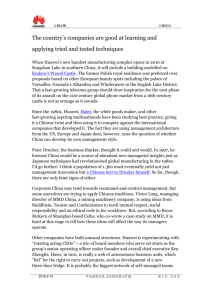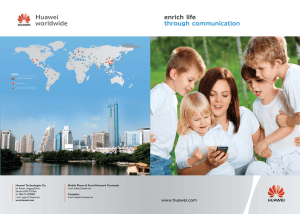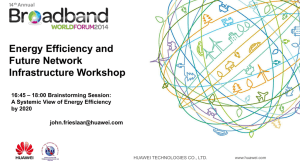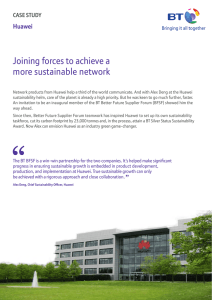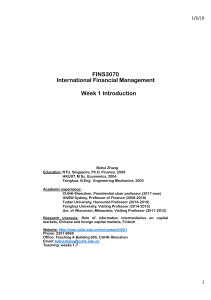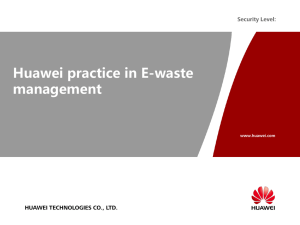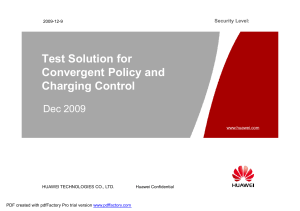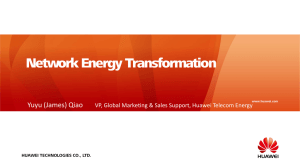HUAWEI TECHNOLOGIES: Chinese Telecom Giant Establishes Competitive Edge
advertisement
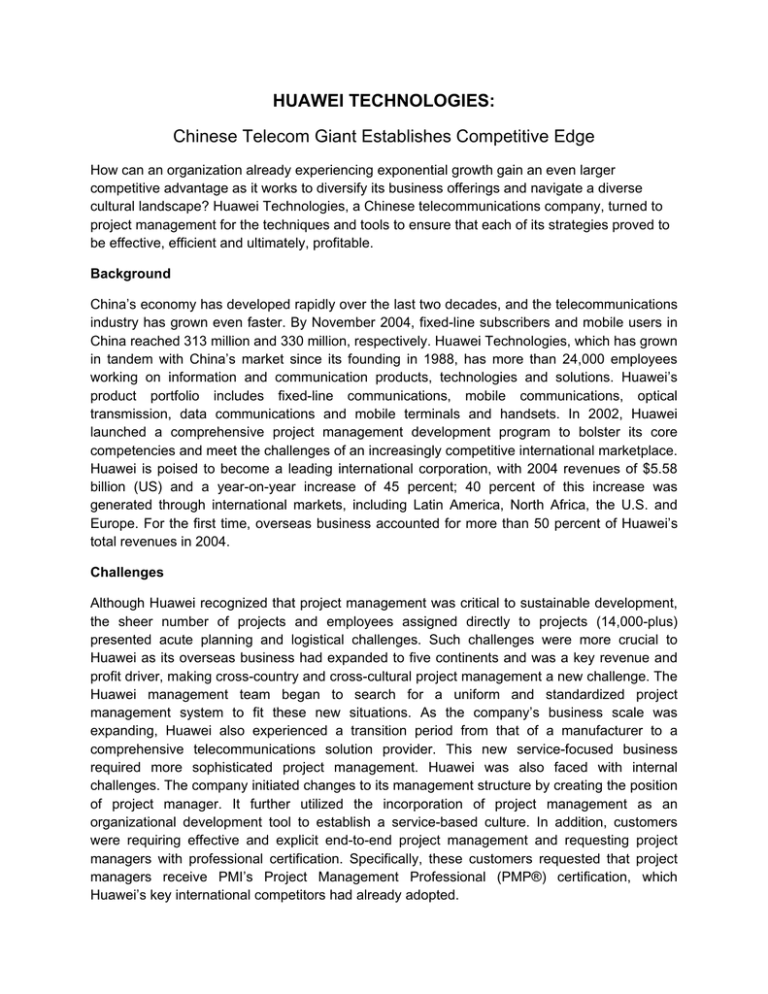
HUAWEI TECHNOLOGIES: Chinese Telecom Giant Establishes Competitive Edge How can an organization already experiencing exponential growth gain an even larger competitive advantage as it works to diversify its business offerings and navigate a diverse cultural landscape? Huawei Technologies, a Chinese telecommunications company, turned to project management for the techniques and tools to ensure that each of its strategies proved to be effective, efficient and ultimately, profitable. Background China’s economy has developed rapidly over the last two decades, and the telecommunications industry has grown even faster. By November 2004, fixed-line subscribers and mobile users in China reached 313 million and 330 million, respectively. Huawei Technologies, which has grown in tandem with China’s market since its founding in 1988, has more than 24,000 employees working on information and communication products, technologies and solutions. Huawei’s product portfolio includes fixed-line communications, mobile communications, optical transmission, data communications and mobile terminals and handsets. In 2002, Huawei launched a comprehensive project management development program to bolster its core competencies and meet the challenges of an increasingly competitive international marketplace. Huawei is poised to become a leading international corporation, with 2004 revenues of $5.58 billion (US) and a year-on-year increase of 45 percent; 40 percent of this increase was generated through international markets, including Latin America, North Africa, the U.S. and Europe. For the first time, overseas business accounted for more than 50 percent of Huawei’s total revenues in 2004. Challenges Although Huawei recognized that project management was critical to sustainable development, the sheer number of projects and employees assigned directly to projects (14,000-plus) presented acute planning and logistical challenges. Such challenges were more crucial to Huawei as its overseas business had expanded to five continents and was a key revenue and profit driver, making cross-country and cross-cultural project management a new challenge. The Huawei management team began to search for a uniform and standardized project management system to fit these new situations. As the company’s business scale was expanding, Huawei also experienced a transition period from that of a manufacturer to a comprehensive telecommunications solution provider. This new service-focused business required more sophisticated project management. Huawei was also faced with internal challenges. The company initiated changes to its management structure by creating the position of project manager. It further utilized the incorporation of project management as an organizational development tool to establish a service-based culture. In addition, customers were requiring effective and explicit end-to-end project management and requesting project managers with professional certification. Specifically, these customers requested that project managers receive PMI’s Project Management Professional (PMP®) certification, which Huawei’s key international competitors had already adopted.



